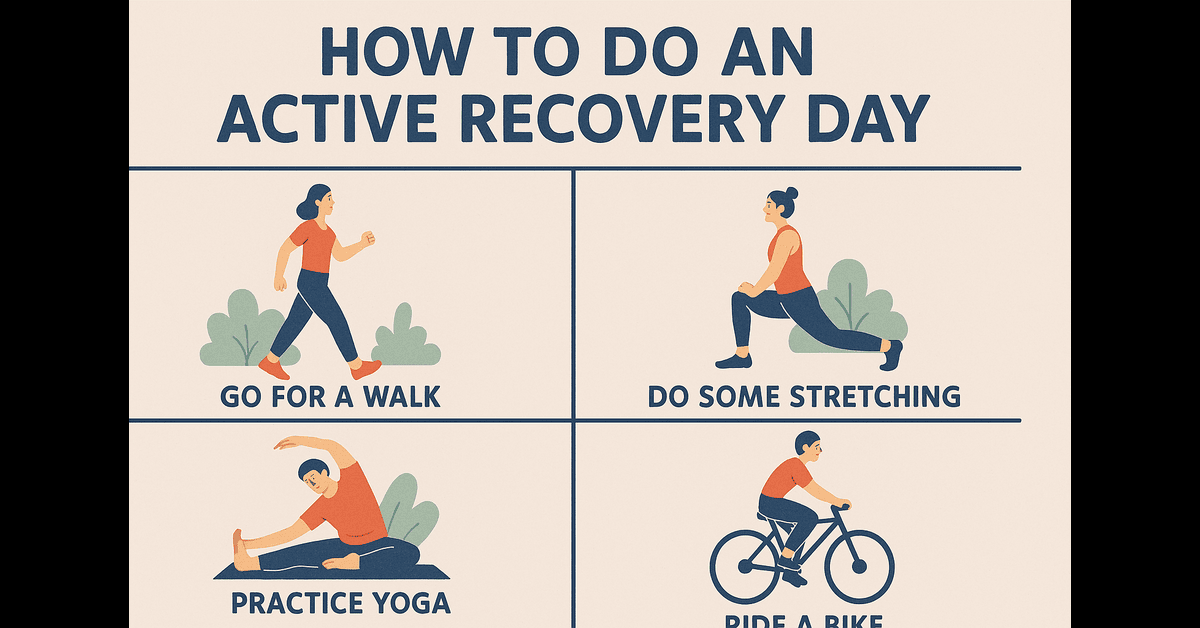In the world of fitness and exercise, recovery is just as important as training. However, recovery doesn’t always mean complete rest. Enter active recovery – a low-intensity, movement-based approach that promotes muscle repair, reduces soreness, and improves overall mobility. If you’re looking to optimize your training and enhance recovery, this guide will walk you through everything you need to know about active recovery days.
What is Active Recovery?
Active recovery involves performing low-impact exercises that help improve circulation, ease muscle tension, and support overall recovery. Unlike passive recovery, where you completely rest, active recovery keeps your body moving without putting excessive strain on it.
Benefits of Active Recovery
- Reduces Muscle Soreness – Light movement helps flush out lactic acid and promotes blood flow.
- Prevents Stiffness – Gentle stretching and mobility work keep joints and muscles flexible.
- Enhances Circulation – Increased blood flow speeds up muscle repair and nutrient delivery.
- Boosts Recovery Time – Helps your body recover faster between intense workouts.
- Improves Mental Well-being – Light movement can reduce stress and promote relaxation.

How to Plan an Active Recovery Day
A well-structured active recovery day includes light cardio, mobility work, and relaxation techniques. Here’s how to do it effectively:
1. Low-Intensity Cardio (10-30 Minutes)
Engaging in light cardiovascular activities keeps your body moving without excessive strain.
- Walking – An easy, low-impact way to get the blood flowing.
- Cycling – Keep resistance low and focus on a steady pace.
- Swimming – A full-body workout that is gentle on the joints.
- Yoga – Promotes flexibility and relaxation while keeping you active.
2. Mobility & Stretching (10-20 Minutes)
- Dynamic Stretching – Gentle movements such as leg swings and arm circles to keep joints active.
- Foam Rolling – Helps relieve muscle tightness and improve mobility.
- PNF Stretching – A deeper form of stretching that enhances flexibility.
3. Light Bodyweight Movements (Optional)
- Air Squats – Helps maintain lower body mobility.
- Lunges – A controlled movement to improve leg flexibility.
- Push-ups – Engage upper body muscles without overloading them.
- Step-ups – Great for improving leg strength and endurance.
4. Relaxation & Breathing Techniques
- Deep Breathing Exercises – Helps reduce stress and improve recovery.
- Meditation or Mindfulness – Enhances mental well-being and relaxation.
Hydration & Nutrition for Recovery
- Stay Hydrated – Water helps flush toxins and support muscle function.
- Eat Protein & Healthy Carbs – Foods like eggs, lean meats, and whole grains promote muscle repair.
- Include Anti-Inflammatory Foods – Turmeric, ginger, and berries can help reduce soreness.
What to Avoid on an Active Recovery Day
- High-Intensity Workouts – Avoid heavy lifting, sprints, or excessive cardio.
- Overstretching Sore Muscles – Stick to gentle stretches.
- Complete Inactivity – Movement is key to optimal recovery.
Conclusion
Active recovery is a powerful tool to keep your body in peak condition while preventing injuries and enhancing performance. Incorporating light movement, stretching, and relaxation techniques can accelerate muscle repair and keep you feeling your best. The next time you’re feeling sore or fatigued, consider an active recovery day instead of complete rest—you’ll be surprised at how much better you feel!
How do you incorporate active recovery into your fitness routine? Let us know in the comments below!


